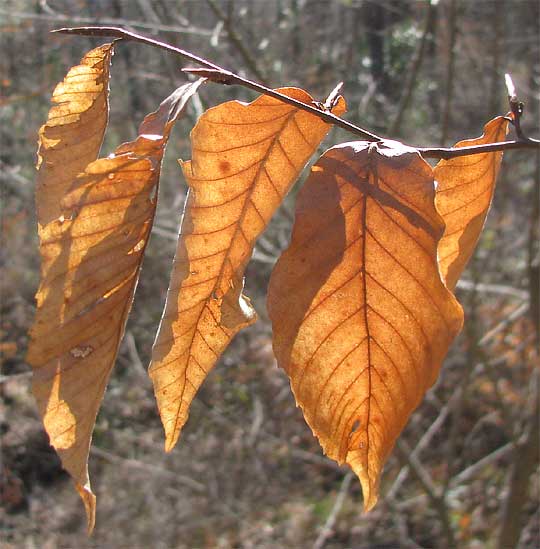Excerpts from Jim Conrad's
Naturalist Newsletter
from the February 2, 2009 Newsletter, issued from the forest near Natchez, Mississippi; elevation ~400ft (120m), ~N31.47°, ~W91.29°:
OLD LEAVES ON BEECH TREES
When dazzling sunlight floods into the wintry woods it's pretty to see how it lights up old, parchment- colored leaves still hanging on the American Beeches, FAGUS GRANDIFOLIA. You can see such leaves below:

Why do beech trees retain their leaves until late winter or early spring while most neighboring deciduous trees lose theirs in the fall?
From what I can read, the prime reason may be that by retaining leaves until early spring, beech trees then benefit from two leaf-falls: the fall of other trees in the autumn, and of their own in the spring. So what's the benefit of that? Having two falls instead of one represents a more continuous process of recycling nutrients, plus the latter fall takes place when spring roots are growing rapidly, most needing the nutrients carried in fall-falling leaves.
This points to Nature's obsession with recycling, and Her economy dealing with resources such as leaf nutrients.
And what a contrast this is with what we see in towns during fall, when people ship out their leaves in garbage bags, to be dumped in landfills!
For my part, I feel good living next to wintertime Fagus grandifolia, if only because its parchment-like leaves bespeak the species' sense of frugality, self reliance and generosity toward the rest of the community.